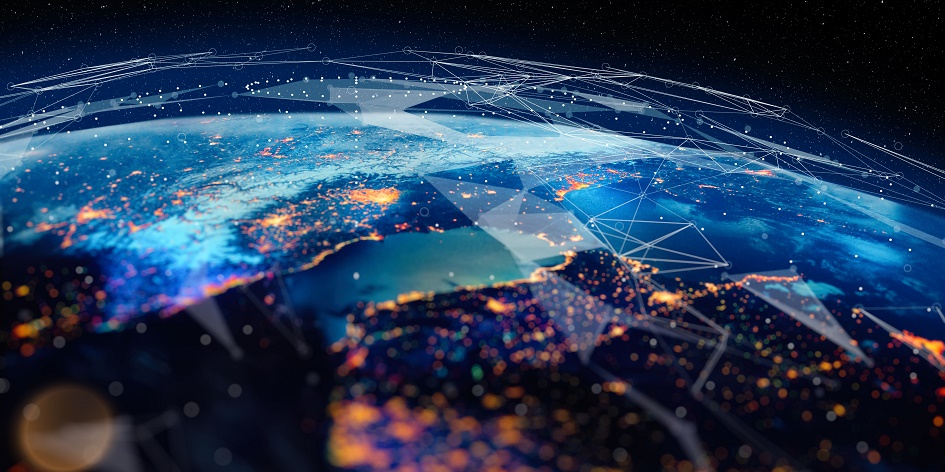In today’s fast-changing world, dominated by technology and data, geospatial technologies are increasingly gaining importance and revolutionizing our understanding and interaction with our environment. Geospatial technologies have become essential instruments for decision-makers in various sectors, whether it’s enhancing urban infrastructure or monitoring the impacts of climate change. They assist in the gathering, examination, and interpretation of data concerning Earth’s spatial features. This work utilizes sophisticated technologies like geographic information systems (GIS), remote sensing, and global positioning systems (GPS) to collect, handle, and analyze geographically referenced information. A Reflective Essay Writing Service, such as EssayHub.com can enhance this field by providing professionals with a structured approach to critically analyze their work, articulate insights, and consider ethical implications of using these advanced geospatial tools, ultimately contributing to more informed and responsible use of these technologies.
As our world becomes ever more interconnected, the significance of geospatial science is on the rise, underscoring the necessity for thorough education in this area. Education in geospatial science is essential for creating opportunities and enhancing the relationship between humans and their surroundings. Let’s explore how.
Geospatial Science in School Education
The state of geospatial science education in schools differs widely depending on the region and
the educational framework in place. Geospatial science is frequently confined to specialized programs or elective courses instead of being woven into the main curriculum. Integrating geospatial science into the school curriculum provides many advantages for students.
Spatial Awareness and Critical Thinking
Education in geospatial science bolsters students’ spatial awareness and critical thinking abilities, enabling them to effectively analyze and interpret spatial information. Students need to examine patterns, recognize relationships, and derive conclusions using spatial data. This process enhances their capacity to think critically, create hypotheses, and participate in reasoning based on evidence. Spatial awareness allows one to comprehend and interpret spatial relationships, scale, and viewpoints. This ability is useful in navigation, city planning, and managing environmental resources.
Multidisciplinary Learning
Geospatial science fosters interdisciplinary education by integrating aspects of geography, mathematics, computer science, and environmental studies. It motivates students to investigate these cross-disciplinary links, promoting cooperation and team effort. Engaging in geospatial projects allows students to encounter a variety of viewpoints and skills. This multifaceted strategy fosters a comprehensive grasp of real-world issues and inspires students to think innovatively and work together with their classmates. Recognising Geospatial Excellence within this interdisciplinary framework can further enhance student engagement and motivation, highlighting outstanding achievements in geospatial projects and research. By acknowledging and celebrating exemplary work, students are encouraged to push their boundaries, apply their diverse skills creatively, and strive for excellence in their geospatial endeavors.
Analytical Skills and Data Literacy
By participating in geospatial analysis and problem-solving tasks, students enhance their analytical abilities significantly. They develop skills in collecting, analyzing, and integrating intricate spatial information, improving their critical thinking and ability to make well-informed decisions. Geospatial science education enhances data literacy by teaching students how to handle and assess spatial information, thereby boosting their research capabilities and data interpretation skills.
Real-World Applications and Skills
Geospatial science education helps students connect with real-world problems and inspires them to think about the societal impact of their work. Additionally, it provides students with practical skills that are extremely pertinent in today’s technology-centric environment, making them valuable not just for future careers in geospatial fields, but also across various industries where the analysis of spatial data is becoming more crucial.
Geospatial Tech: Diverse Careers and Research Paths
Geospatial science is widely utilized across many industries, creating numerous opportunities for students in careers, research, and academics.
Urban Planning
In city planning, geospatial science plays a vital role in examining and illustrating urban environments. Urban planners can evaluate population density, land use trends, and infrastructure systems by employing geospatial technologies. This data allows them to plan efficient transportation networks, manage resources wisely, and develop sustainable communities.
Environmental Management
Geospatial science also provides significant advantages for environmental management. Utilizing satellite imagery and remote sensing methods, geospatial technologies offer precise information on vegetation coverage, deforestation, water sources, and climate trends. This data assists environmental scientists in tracking changes over time, pinpointing vulnerable regions, and developing plans for conservation and disaster management.
Transportation
Geospatial science plays a crucial role in transportation planning and logistics by optimizing routes, examining traffic patterns, and boosting efficiency. By combining geospatial data sourced from GPS devices, traffic sensors, and mapping applications, transportation experts can make better decisions to alleviate congestion, improve public transit systems, and lower fuel use.
Disaster Response and Management
During natural disasters such as hurricanes or earthquakes, geospatial technologies offer vital information to emergency response teams. By examining real-time information on impacted regions, population density, and infrastructure, responders can efficiently distribute resources, devise evacuation plans, and pinpoint the most at-risk areas. Geospatial data also assists in evaluating and recovering from disasters.
Precision Agriculture
Geospatial science is revolutionizing contemporary agriculture with its precision farming methods. Through the use of GPS technology, satellite images, and soil sensors, farmers are able to accurately map their fields, assess soil conditions, and enhance their irrigation and fertilization practices. This method, informed by data, allows farmers to optimize crop production, minimize resource waste, and lessen environmental harm.
Public Health and Planning
Geospatial science plays a crucial role in public health planning, especially when it comes to monitoring and controlling disease outbreaks. Through the analysis of geospatial data concerning population density, disease transmission, and healthcare infrastructure, public health officials are able to pinpoint critical areas, monitor disease progression, and distribute resources efficiently. This data helps to carry out specific interventions, enable early identification, and reduce the effects of epidemics.
Natural Resource Management
Geospatial science plays a crucial role in the management and conservation of natural resources. For example, in the field of forestry management, geospatial technologies assist in tracking forest cover, identifying illegal logging, and evaluating the condition of ecosystems. In the field of water resource management, geospatial data plays a crucial role by aiding in the monitoring of water quality, the analysis of watersheds, and the promotion of sustainable water usage.

Overcoming Obstacles in Geospatial Science Education
Introducing geospatial science education into the curriculum can encounter multiple typical obstacles that need to be resolved to guarantee successful implementation. One challenge is that educators and administrators often lack awareness about the advantages and significance of geospatial science education. Numerous teachers might lack awareness about geospatial technologies or the ways geospatial analysis can be applied in different fields. Tackling this issue involves initiatives to increase awareness of the importance of geospatial science education by offering professional development programs, workshops, and conferences.
An additional obstacle is the scarcity of resources and technology needed for teaching geospatial science. For some educational institutions, especially those with tight budgets, getting access to GIS software, remote sensing tools, and other geospatial technologies can be costly or simply out of reach. Collaborating with government bodies, private entities, and academic institutions can be instrumental in obtaining financial support and resources for geospatial science education programs.
Overcoming obstacles in geospatial science education is possible by tackling shared issues, ensuring proper teacher training and professional growth, and pushing for more funding and resources. This will allow students to maximize the advantages of geospatial science education and cultivate the abilities required to succeed in a world increasingly connected through geospatial technology. Additionally, highlighting the potential geospatial science salary prospects can serve as a motivating factor for both educators and students. As the demand for geospatial professionals grows across various industries, emphasizing the competitive salaries and career opportunities in this field can help attract more interest and investment in geospatial science education programs.
Final Thoughts
Education in geospatial science, whether at the school or university level, is incredibly significant in today’s world. It provides students with essential skills to explore the geospatial world, enhancing their critical thinking, spatial understanding, and problem-solving capabilities. Integrating geospatial science into the curriculum enables educational institutions to equip the next generation with the skills needed to comprehend intricate spatial relationships, address real-world problems, and contribute to a more sustainable and flourishing future. Policymakers, educators, and relevant stakeholders need to acknowledge the importance of geospatial science and its capacity to improve student learning and prepare the future workforce. To ensure that schools and universities possess the necessary infrastructure, software, and equipment, it is essential to boost investment in geospatial science education, encompassing both financial support and resources. Geospatial science education can thrive through joint efforts and teamwork.
Additional Resources
To further support the integration of geospatial science education in schools and universities, here are some valuable resources:
- Online Courses: Platforms like Coursera, edX, and Udemy offer introductory and advanced courses in GIS, remote sensing, and spatial analysis.
- Open-Source Software: QGIS and GRASS GIS are free, open-source alternatives to commercial GIS software, making geospatial technology more accessible to educational institutions.
- Educational Initiatives: Programs like the National Geographic Society’s Geo-Inquiry Process provide educators with tools and resources to integrate geospatial thinking into their curricula.
- Government Resources: Many national mapping agencies, such as the U.S. Geological Survey, offer free geospatial data and educational materials.
- Professional Organizations: Groups like the American Association of Geographers (AAG) and the International Cartographic Association (ICA) provide resources, conferences, and networking opportunities for educators and students.
- Academic Journals: Publications like the Journal of Geography in Higher Education and the International Journal of Geospatial and Environmental Research offer insights into current research and best practices in geospatial education.
